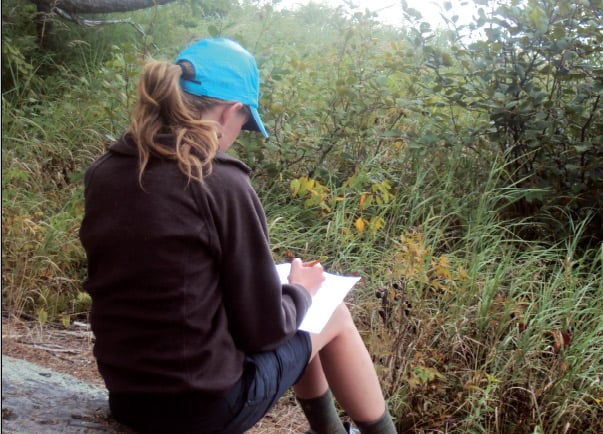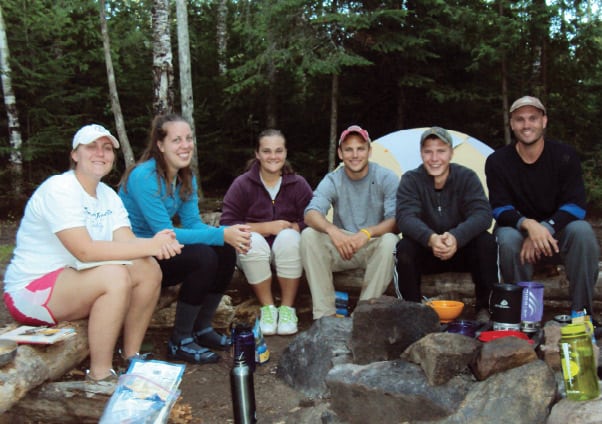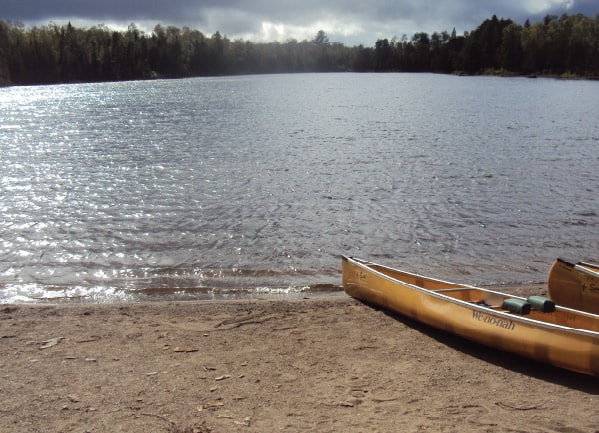by Greg Seitz
Does your brain work better in the Boundary Waters? Paddlers have been pondering the profound psychological shifts that take place in the wilderness for as long as humans have been seeking refuge there from the hectic modern world. Now, a researcher from Nebraska has shown that creativity and other cognitive abilities skyrocket in canoe country.

By testing college freshmen embarking on a six-day canoe trip, Dr. Frank Ferraro of Nebraska Wesleyan University found their creative thinking capabilities essentially doubled in the wilderness.
The effect seems to be related to the fact that the pre-frontal cortex quiets down during time in the wilderness, allowing more creative thinking.
“The benefit of the outdoors is that it decreases activity in part of brain that does ruminating thoughts,” Ferraro says. Those ruminating thoughts, sometimes called brooding, can keep our attention largely focused inward. Being immersed in wilderness, free of distractions, we begin to notice beauty and wonder—and our creativity is free to flourish.
Ferraro’s research joins the findings of several other psychologists in recent years that have published papers about nature and mental health. He built his on a previous study by Dr. David Strayer of the University of Utah. Strayer first used a standardized creativity test called the Remote Associates Test (RAT) on Outward Bound hikers on 4-6 day wilderness trips.
Each question consisted of three words that are somehow related, and the students were challenged to find that connection. For example: wood, liquor, luck. The answer is “hard”: hardwood, hard liquor, hard luck. Or, more abstractly: same, tennis, head. Answer: Match.
It seems pretty straightforward, but it gives quantifiable data about cognition. Strayer’s study found a 50 percent increase in scores after four days of backpacking in the mountains.

The results were also clear in Ferraro’s Boundary Waters study. Taking the test before the canoe trip, students averaged three-and-a-half correct answers. By the end of the trip, their scores had doubled to an average of seven. Students who stayed at school were used as a control group, and their results barely changed from test to test.
Strayer and Ferraro’s studies are two of several that have looked at the mental health benefits of nature in the past decade. since the publication of Richard Louv’s book Last Child in the Woods in 2005. Louv coined the term “Nature Deficit Disorder” to describe what afflicts kids whose lives are too structured, and spent too much time indoors. Louv argued that this recent cultural shift away from lives integrated with nature was clearly leading to greater depression, anxiety, attention deficit, hyperactivity, and other mental illness.
As researchers dug into the issue, the world has taken notice. A New York Times article in July wrote about researchers at Stanford, who found that a short walk in nature can reduce counter-productive and depressing “brooding”—negative thoughts that repeatedly run through a person’s mind.
Ferraro knows these benefits firsthand. He grew up in urban Omaha and never did much outdoors. He wouldn’t have even considered a wilderness trip, but then he took an introductory trip with the program’s leader, Dale Benham. Ferraro said it changed his life.
“I felt this rejuvenation. I started forgetting about things I thought were the big problems, stopped ruminating, started focusing on big problems, what am I doing with my career, what am I doing with my life? Things got real clear to me out there,” Ferraro recalls.

In the Stanford University study, a team measured brain activity in research subjects after they spent 90 minutes either walking through an arboretum or next to a busy highway, Ferraro figured the extended, immersive experience of nature in the Boundary Waters was important.
“To get the most robust effects, strongest data, you would need an immersive experience. David Strayer has a theory that it’s three days of disconnection from technology and the modern world before you start to get benefits,” Ferraro says.
Those benefits may come from a reduction in stress hormones. Free of day-to-day worries, a chemical in our brain called cortisol decreases. Greater reductions come from more immersive natural experiences. A multi-day canoe trip can have a far greater impact than a short walk in a park.
But that is more true for experienced paddlers than novices. The fact is that for first-timers, the wilderness presents its own stressors.

With still more questions than answers, Ferraro hopes to continue his study in the years ahead. Other tools could help connect the creativity to the brain activity that inspires it. Using perhaps portable EEGs, vials to sample spit and hormone levels, and other techniques, Ferraro thinks we could better understand how to get the most mental health benefits out of the wonder drug called wilderness.
Originally published in Wilderness News Fall Winter 2015

